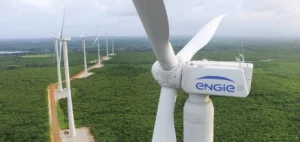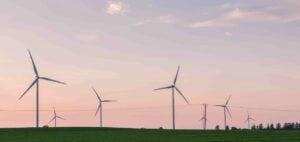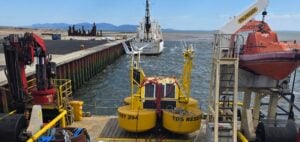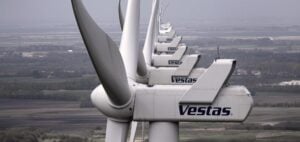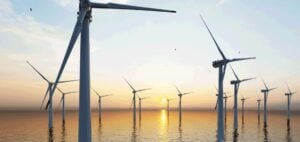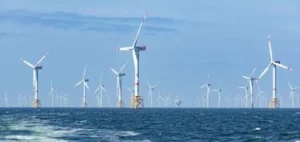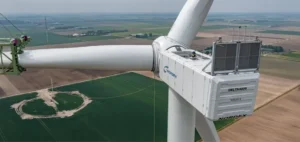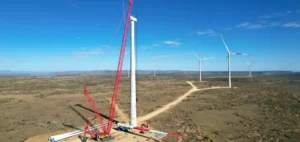RWE has announced the installation of the first turbine foundation for the Sofia offshore wind project, located on Dogger Bank, 195 kilometers off the northeast coast of the UK. With a capacity of 1.4 GW, Sofia is RWE’s largest offshore wind farm to date and is scheduled for commissioning in 2026. Once operational, it will generate enough electricity to power 1.2 million British homes.
Technology and capacity
The Sofia wind farm will use 100 Siemens Gamesa 14 MW offshore wind turbines (SG 14-222 DD), among the most technologically advanced available. Each turbine will measure 252 metres in height, with 108-metre-long carbon-fibreglass blades, covering an area of 39,000 m². In addition, 44 turbines will be equipped with recyclable blades, underlining RWE’s commitment to sustainability.
Logistics and installation
Van Oord, an international marine contractor, is in charge of installing the foundations using the vessel ‘Aeolus’. The process involves the installation of three foundations per cycle, with a transit time of up to 16 hours. All 100 foundations should be installed by spring 2025. This step follows the installation of the high-voltage HVDC export cable, which began in 2023.
Economic and strategic impact
The Sofia project also marks a turning point for the Port of Tyne, which has undergone a significant upgrade to support this and similar future projects. RWE plays a key role in the UK’s strategy to achieve Net Zero targets and boost energy security. The Sofia wind farm contributes to the UK’s target of 50 GW of offshore wind capacity by 2030.
With the Sofia project, RWE is demonstrating its expertise in offshore wind power and its commitment to supporting the UK’s sustainable energy ambitions. The commissioning of Sofia will not only boost the country’s energy capacity, but also contribute to the transition to a greener, more sustainable economy.



